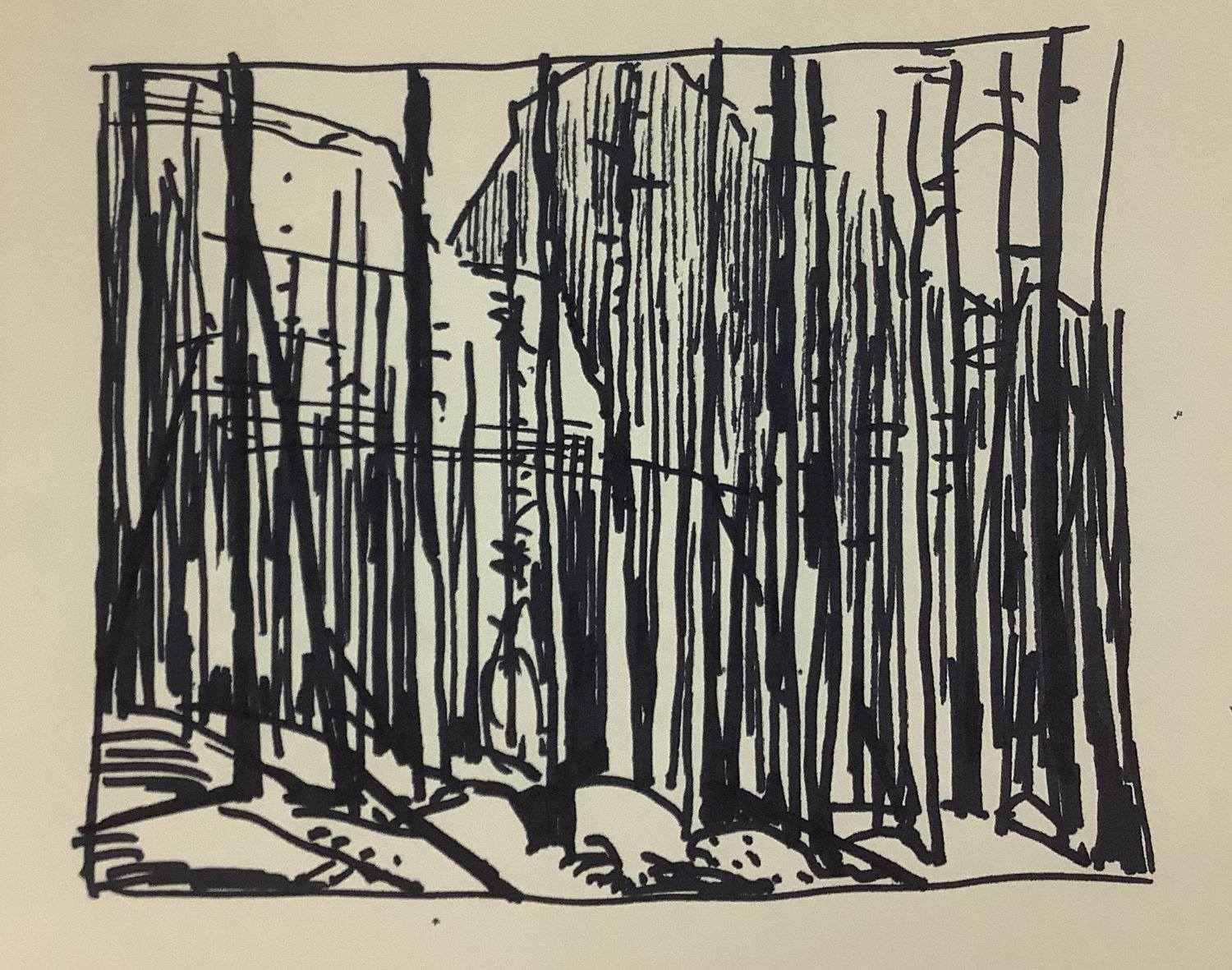Illingworth (Buck) Kerr RCA, OC
1905-89
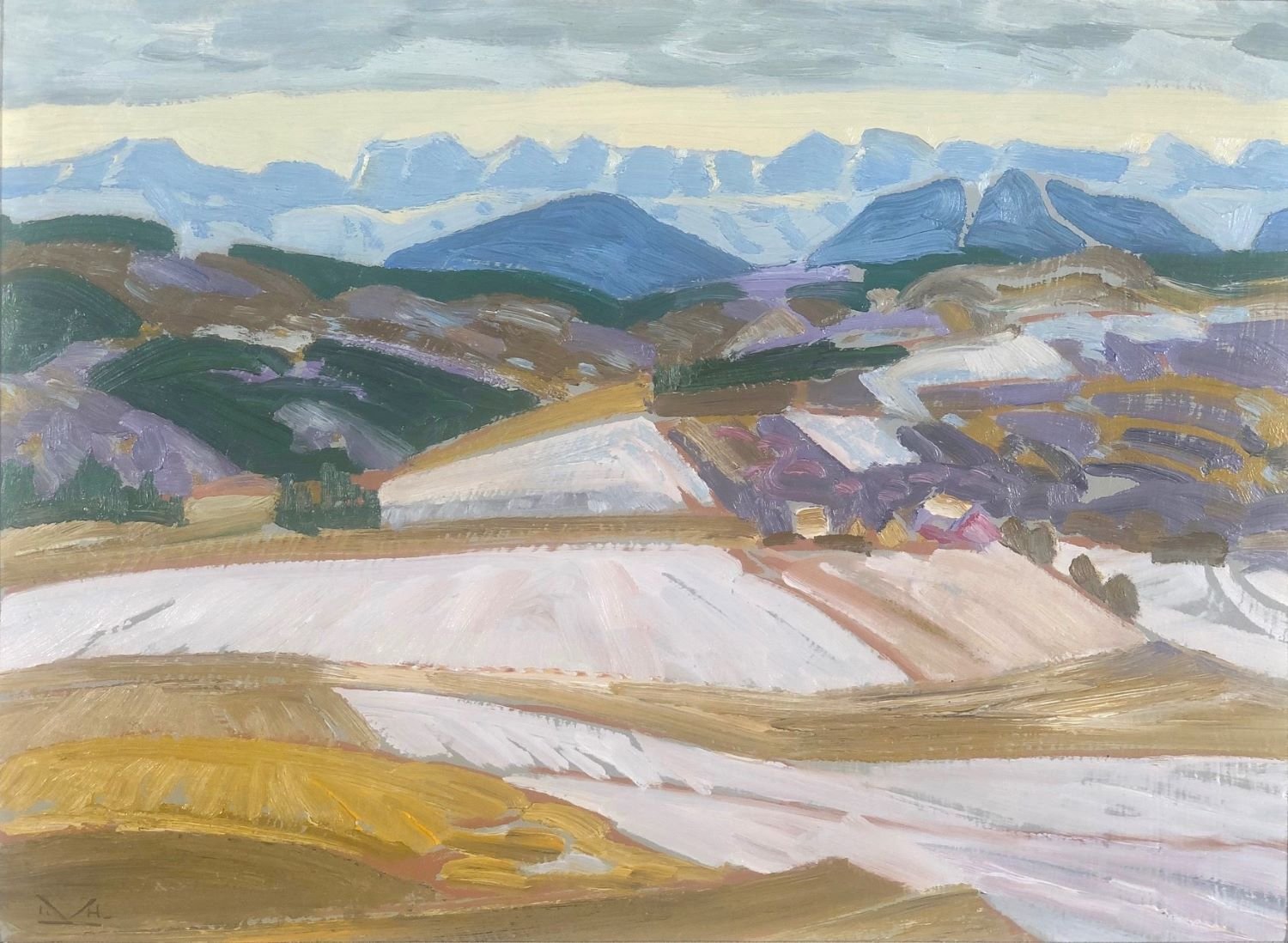
First Snow, Foothills, n.d., oil on panel, 12x16 inches (30.5 x 40.5 cm), sold.
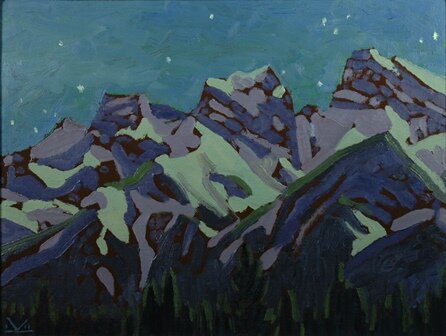
Three Sisters Make A Night Of It, 1987, oil/artist panel, 12x16 inches, sold
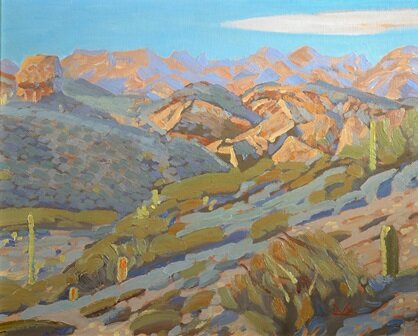
Near Tortilla Flats, Arizona, Apache Trail, 1977, oil/panel, 16x20 inches....Kerr applied paint heavily, with broken brushstrokes, across the surface of this painting; this plays with the effects of light and his colour expression, while adhering to a formal structure of the pictorial space. - sold
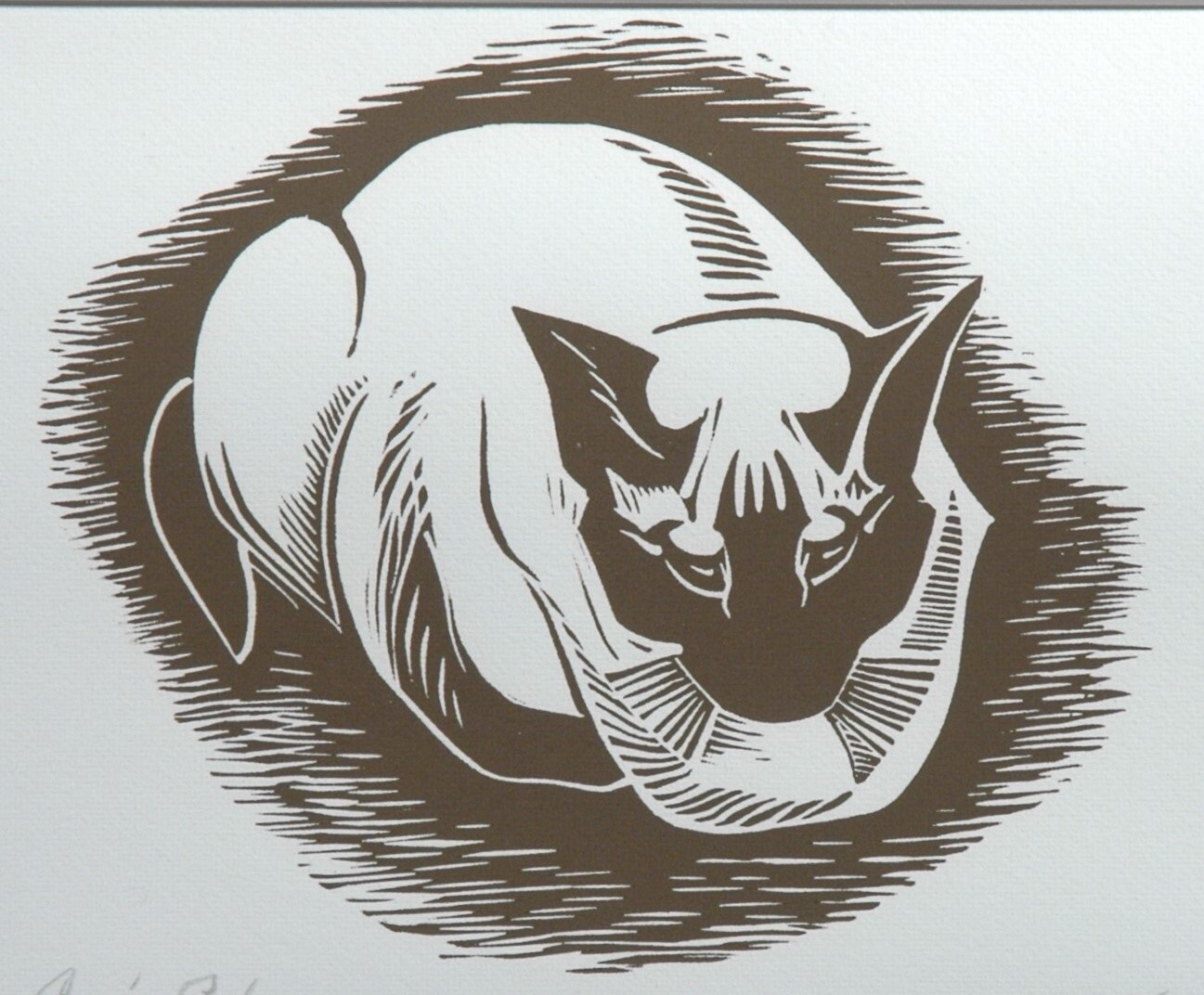
Cosi Cat, a/p, linoblock/paper, 7 x 8 inches, sold.
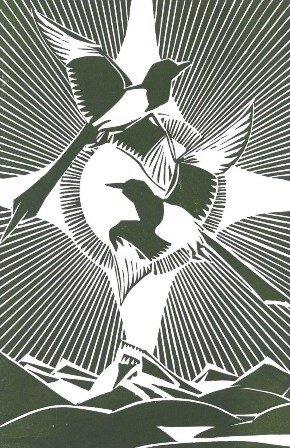
Magpies Winter Sun, 1989, linoblock/paper, 8.75 x 6.25 inches, sold
enjoy Kerr drawings and prints...
Illingworth Kerr applied paint liberally, with broken brushstrokes, across the surface of his paintings; this plays with the effects of light and his colour expression, while adhering to a formal structure of the pictorial space.
Illingworth Holey Kerr was born in Lumsden, Saskatchewan (1905). He grew up in the small prairie town where he felt a close association to animals and began drawing them at an early age. His mother, who was a watercolourist, encouraged him to draw and paint. At 14 years of age he entered a number of artworks into the 1919 Regina Exhibition, all won awards. In 1923, the young Kerr headed east to get an art education and after a brief session at Central Technical School in Toronto, enrolled at the Ontario College of Art. His teachers included Arthur Lismer, Frederick Varley, J.E.H. MacDonald , William Beatty and C.W. Jeffrey. After OCA, he returned to the prairies via Banff (where he visited the studio of Carl Rungius), it was at this time that Kerr realized just how much Western Canada was a part of his makeup. Back in Lumsden he rented a studio above the pool hall (he operated a trapline to support his art). Working from oil sketches, Kerr created some of his most famous canvases including When Winter Comes (AFA Collection) and Western Theatre (Glenbow Museum Collection). Introduced to the works of James Henderson, Campbell Tinning and Augustus Kenderdine at an exhibition in Regina, Kerr painted Flood, Lumsden Saskatchewan (1931) and Straw Stacks, March Thaw (1935) (Glenbow Collection). This work symbolized the culmination of eight years of drought, depression and frustration on the prairie. It was at this time that he burned much of his early work and set off for England.
Settling first in London in the spring of 1936, he worked on documentary films and enrolled at the Westminster School of Art. He spent time drawing the animals in the London Zoo and travelled to Scotland to visit filmmaker and friend, Jenny Gilbertson. In London he was re-acquainted with Mary Spice, whom he had previously met in Regina. Kerr also supported himself as a writer for Blackwoods magazine, and Mary, who was a skilled typist and editor, worked with him. Their relationship grew and the pair married in Ontario in 1938. They spent their early married life in France before returning to Canada.
The Kerr’s moved to Montreal where Buck worked with other artists on projects to represent Canada at the 1939 New York World’s Fair. After which, the couple returned to Lumsden. While there, Kerr was invited to have his first retrospective at the Regina College Gallery (1940). In due course the Kerr’s moved to British Columbia, first to White Rock, then Cultus Lake and finally Vancouver, where he continued to paint and exhibit. He joined the BC Society of Artists and the Federation of Canadian Artists chaired by Lawren Harris. Kerr started teaching at the Vancouver School of Art in 1946. When Jock Macdonald, head of the Art Department at the Provincial Institute of Technology and Art, decided move to the Ontario College of Art, he asked Kerr to apply for his position.
In August 1947 the Kerr’s arrived in Calgary, where Buck Kerr began his twenty year career as head of the Art Department of the Provincial Institute of Technology and Art (later the Alberta College of Art and Design). Marion Nicoll, Stanford Perrott, Luke Lindoe and Stan Blodgett were teaching at the Institute at the time. In addition, Kerr was a director of the Calgary Zoological Society, an associate director of the Calgary Stampede and received commissions to paint portraits of Lieutenant Governor Grant MacEwan, Harry Strom and J.C. Bowan.
In 1959, Buck Kerr was awarded a Canada Council Senior Fellowship to research schools offering industrial design in the United States and Great Britain. This allowed both Mary and Buck to travel by car to Minneapolis, New York, and Boston. They spent time in London as well as travelling to Munich, Venice, Florence, Rome, Barcelona and Madrid.
Illingworth Kerr retired from the Alberta College of Art in 1967, which allowed regular travel to St. Lucia, Arizona, Maui, Barbados, Jamaica and Mazatlan. During these trips they both avidly painted. Kerr concentrated on his art practice, continuing to paint landscapes and wildlife, as well as portraits of political figures. In 1973 he was awarded an Honorary Doctorate from the University of Calgary. Two years later, in 1975, a large-scale retrospective exhibition of his art was presented at the Alberta College of Art Gallery – this gallery was to be renamed the Illingworth Kerr Gallery in September 1990, to commemorate the artist. The retrospective travelled to Regina and Saskatoon.
Mary Kerr died in 1982. In 1983 Buck received the Order of Canada. A major retrospective, Harvest of the Spirit, opened in Edmonton in 1986 and travelled across Canada on an extensive nine-city tour. By 1987, Dr. Kerr was becoming concerned with his ill health and began to put his affairs in order: he donated five hundred drawings and sixteen sketchbooks to the University of Lethbridge Art Gallery. In the same spirit, his library went to the Alberta College of Art. He continued to travel and to paint and draw as long as he was able. On January 6, 1989 Dr. Illingworth Holey (Buck) Kerr passed away.

